Tridimas Brothers Charcuterie: Naturally Cured Perfection from Andros
The Tridimas brothers of Andros craft…
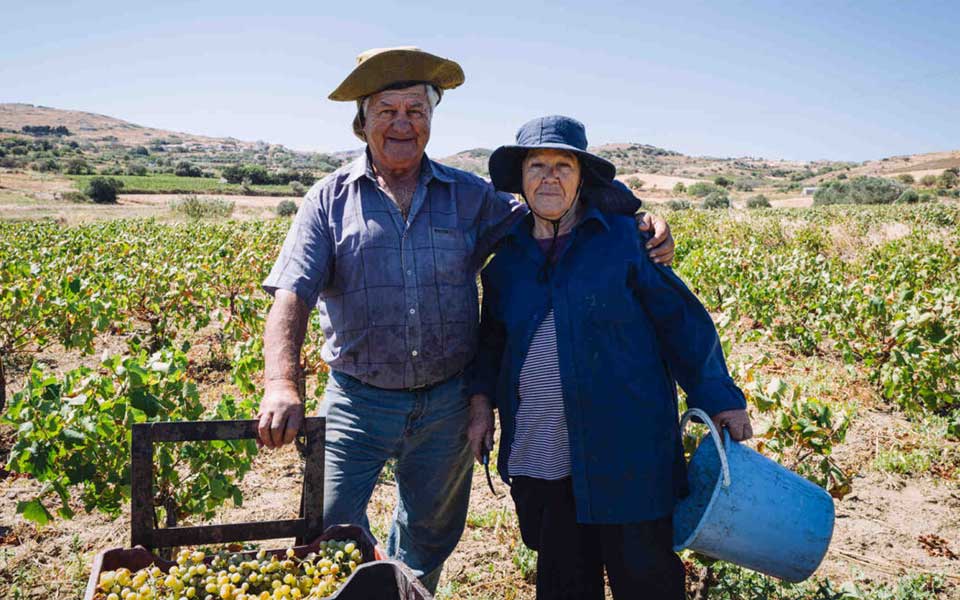
The oldest is the Limnos Wines Agricultural Cooperative, founded in 1937.
© Michael Pappas
Homer and Aristophanes mention Limnian wine, and it has its own entry in Pollux’s dictionary, the Onomasticon (2nd century AD). It is likely to be the first recorded reference to wine in the world and evidence that our ancient ancestors drank it. Limnos’ vineyards have a rich history thanks to their unique terroir, which has always been favorable for grape cultivation.
The volcanic subsoil and the island’s low relief, which allows for free circulation of air from the Thracian Sea, are both critical. Together with the two multidimensional varieties that thrive there, they provide an ideal environment for the island’s hardworking winemakers.
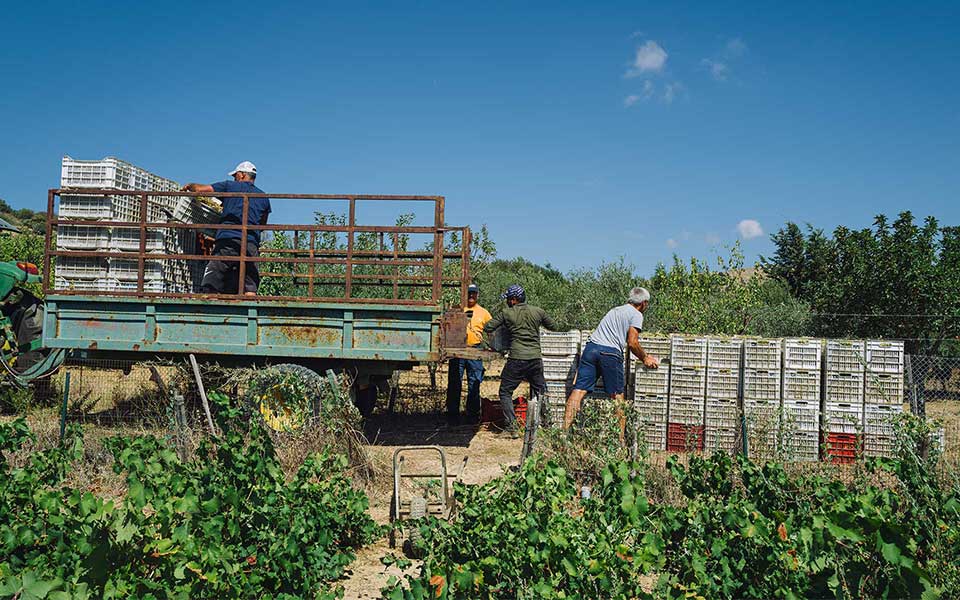
© Michael Pappas
Limnian winemakers concentrate on the ancient, indigenous red variety Limnio and the white Muscat of Alexandria, which was introduced to Limnos in the early twentieth century and spread across the island. Some might consider them romantic; however, this commitment demonstrates their knowledge and awareness, which is what sets them apart: the local varieties are a strong brand name, the treasure of rural Limnos. Both varieties, labeled PDO Limnos, capture the essence of the land and its story.
Indeed, the island’s wineries make extensive use of these grape varieties. This year, Gastronomos magazine recognized the four most active and outward-looking among them for carrying on their land’s ancient winemaking traditions despite the numerous challenges that come with operating on a remote island, and for establishing Limnos as a destination for high-quality Greek wines. The Limnos Wines Agricultural Cooperative, the Garalis Winery, the Chatzigeorgiou Estate, and Limnos Organic Wines are all situated approximately 30 kilometers apart on the western side of the island, where the lowland vineyards meet the sea.
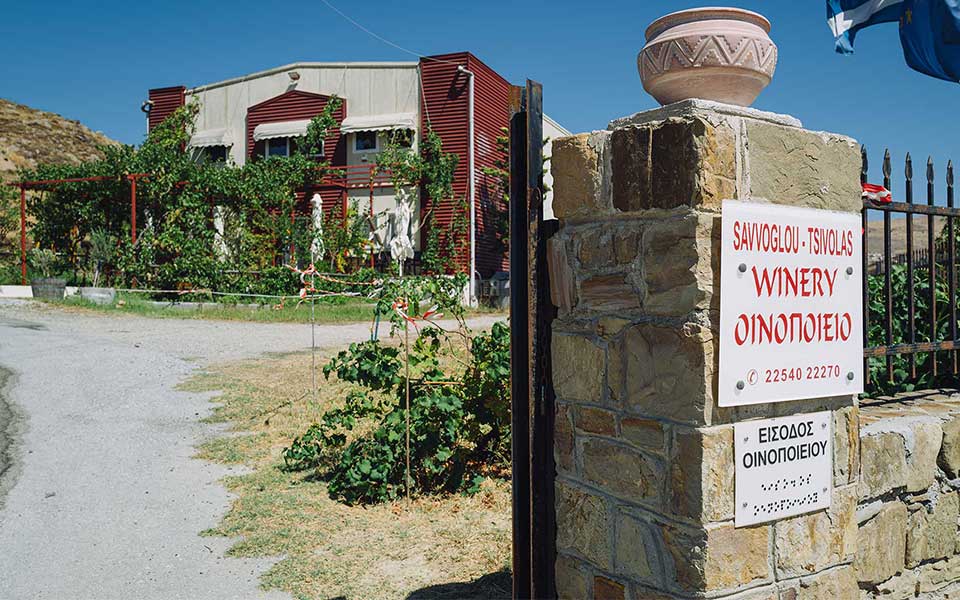
Limnos Organic Wines was established in 2002 in Mavrambelia by Yiannis Savvoglou and Pantelis Tsivolas, two winemakers committed to organic cultivation.
© Michael Pappas
The oldest is the Limnos Wines Agricultural Cooperative, founded in 1937 as a cotton ginning cooperative before transitioning to viticulture and winemaking in 1960. The Cooperative currently processes approximately 2,500 tons of grapes from its 450 members. It produces 13 labels exclusively from the two local varieties, the oldest of which is the famous Limnos, a dry Muscat of Alexandria with aromas of rose, jasmine, and lemon peel, which is celebrating its 70th anniversary this year.
Limnos Organic Wines was established in 2002 in Mavrambelia by Yiannis Savvoglou and Pantelis Tsivolas, two winemakers committed to organic cultivation. They work with a small group of producers through contract farming and also have their own vineyards, spanning about 20 hectares scattered across Fragma Kontia in Aghios Dimitrios, Sardes, Kontopouli, Panagia and Kaminia. “The vine digs deep into the poor, volcanic soil to find its ingredients, toughens up and fights for its survival, ultimately producing very impressive results, with concentrated aromas and rich flavors,” explains oenologist Yiannis Savvoglou.
Their 15 labels, which are based on local varieties, are known for their characteristic minerality and salty aftertaste and are produced in 150,000 bottles annually. Tasting the three red wines they make from the Limnio grape – two blends with Fokiano, another local red variety, in semi-sweet and dry versions, and one incredibly elegant single-varietal dry wine – is very interesting.
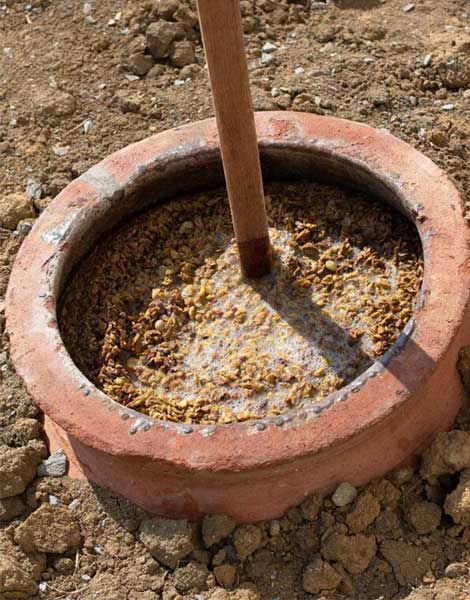
© Giorgos Kontellis
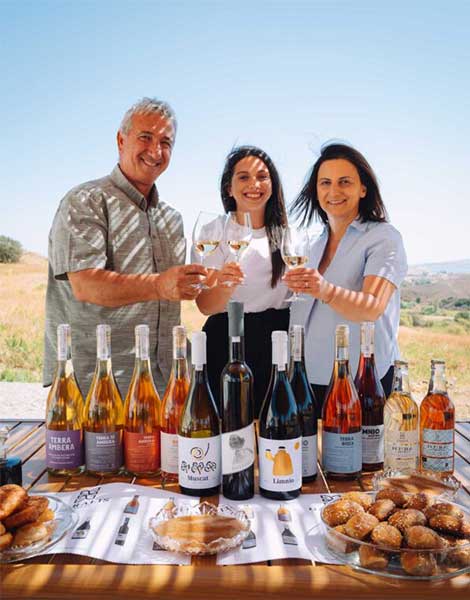
© Giorgos Kontellis
Manolis Garalis and Maria Markaki own the Garalis Winery, which exports 70% of its production abroad. Using their own organic grapes and gentle winemaking interventions, they produce a maximum of 100 tons of wine per year at their winery in Kourouni. They also experiment with winemaking in old amphorae buried in the ground, according to the island’s traditional techniques.
Their crown jewel is Salome, an expressive Muscat of Alexandria that yields only 400 liters of wine from 2.5 tons of grapes, bottled in a maximum of 2,000 bottles a year. This nectar, made from overripe, highly concentrated, sun-dried grapes, dazzles with its satisfying aromas of grape preserve, crème brûlée, blond raisins, rose petals, dried apricots, and honeycomb.
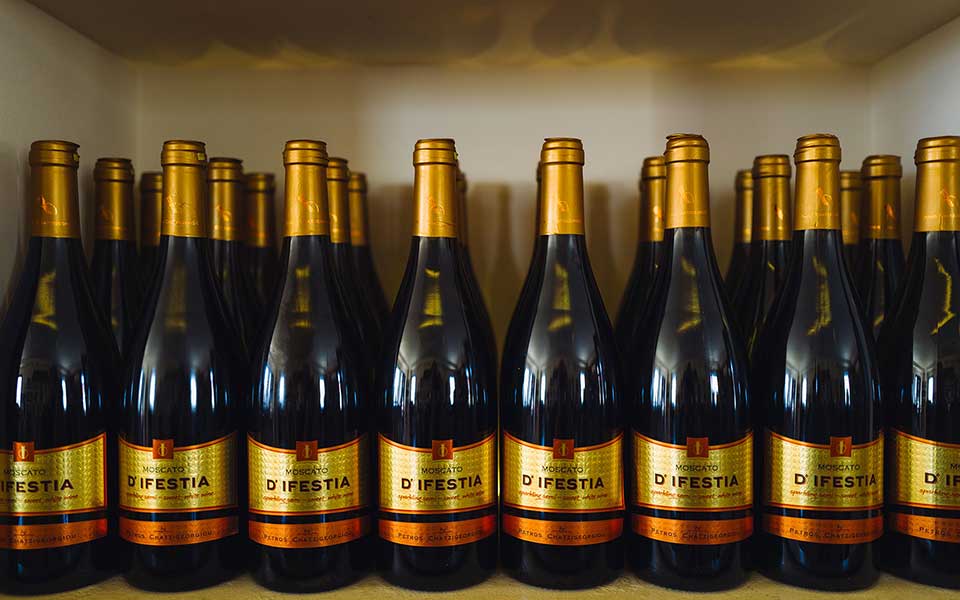
Chatzigeorgiou Estate stands out with its tantalizing semi-sparkling, sweet and sour Moscato.
© Michael Pappas
On the opposite end of the spectrum, Chatzigeorgiou Estate stands out with its tantalizing semi-sparkling, sweet and sour Moscato. They call it Moscato d’Ifestia, and it’s a fantastic wine made using the closed tank method, with bubbles that carry aromas of yellow fruits, rose syrup, and caramel butter as they rise. The Chatzigeorgiou family has decades of winemaking experience, as their great-grandfather ran a winery in his hometown of Smyrna. Their modern winery in Karpasi was founded in 2007. Today, they own 80 hectares of vineyards and produce 350,000 bottles of wine each year, including two long-aged dessert wines made from sun-dried Muscat of Alexandria and Limnio grapes. They recently invested in new facilities for the production of sparkling wines using the traditional Campania method.
These four wineries in Limnos are trailblazers, taking the island’s wine into a new era by being easily accessible to tourists and actively engaged in exports. They make fine dessert wines and sophisticated reds in a variety that showcase the multifaceted character of the grapes, as well as the winemakers’ artistry and experience. Despite their small size, they have ambition and faith in the local varieties, creating wines that capture the essence of the region. Every wine enthusiast should take notice.
These wines from Limnos won First Prize at the 16th Gastronomos Quality Awards, organized by Gastronomos, Greece’s leading food magazine and held in December of 2023.
This article was previously published in Greek at gastronomos.gr.
Limnos Organic Wines, Kaspakas, Τel. (+30) 22540-22.270
Garalis Winery, Aghios Dimitrios, Τel. (+30) 22540-62.871, 22540-61.884
Chatzigeorgiou Estate, Livadohori-Karpasi road, Karpasi, Τel. (+30) 22540-31.082
Limnos Wines Agricultural Cooperative, Port of Aghios Nikolaos, Solinaria area, Myrina, Τel. (+30) 22540-22.212, 22540-22.296
The wines from these Limnos wineries can be found in wine shops and supermarkets throughout Greece.
The Tridimas brothers of Andros craft…
The Moraitis family brings the Cyclades…
These 10 producers have extracted their…
A thriving family business that manufactures…